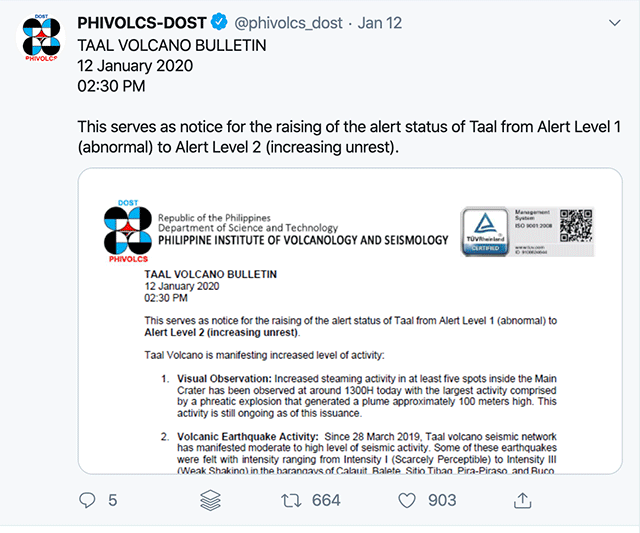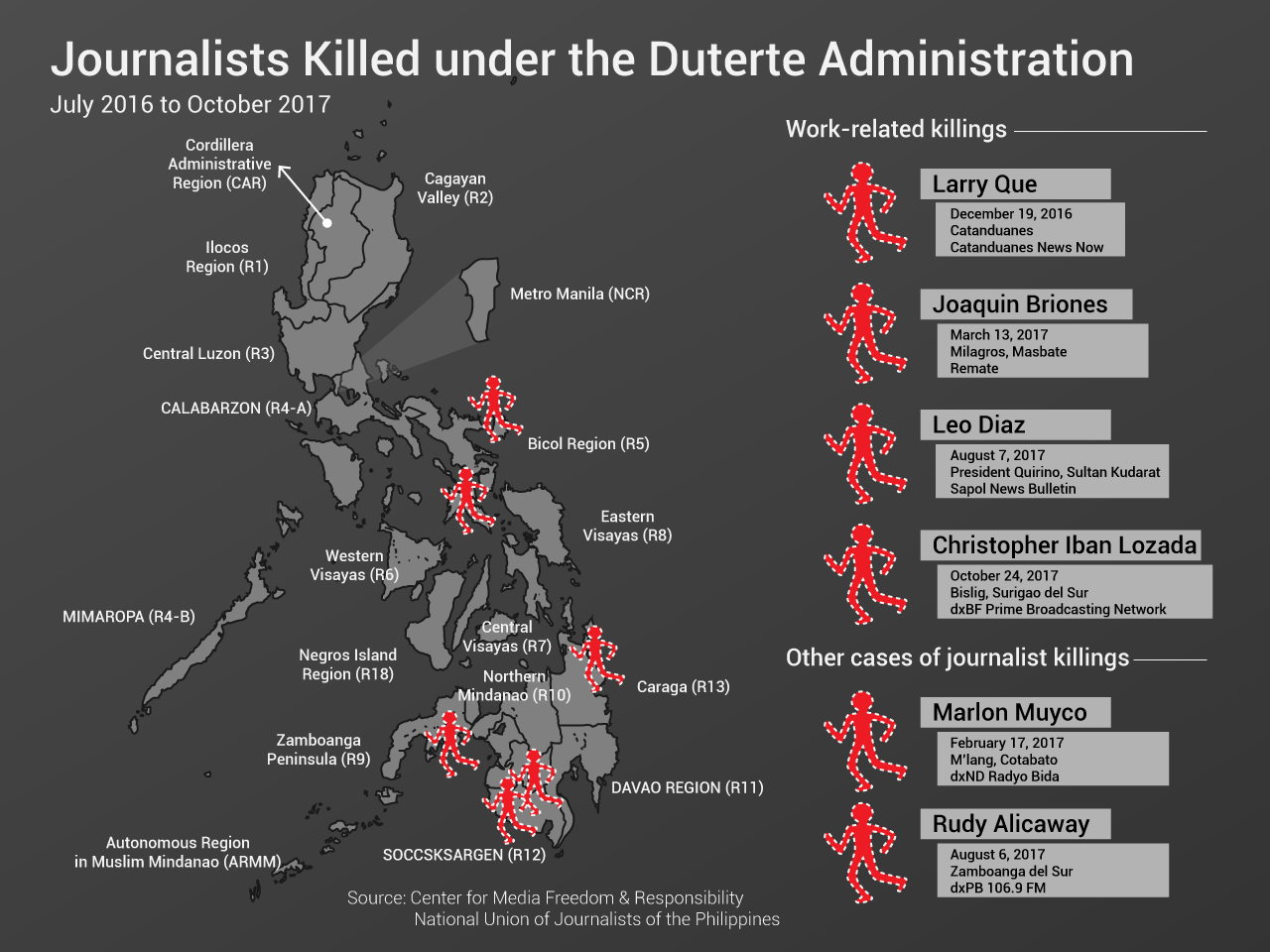Let’s work on a disaster information management system
How did you learn about the eruption of Taal Volcano on Jan. 12, 2020? Many of us got alerted in our social media feeds. During the long ride home from the beach, photos of Taal Volcano spewing ash and smoke into the air started showing up on my Facebook account at 2:45 p.m. Searching keywords on Twitter from a credible news source confirmed with the caption “Taal Volcano erupts on Sunday afternoon.” By 3 p.m., I posted on Facebook and Twitter that “Phivolcs raises Alert Level 2 over Taal Volcano as it releases steam in phreatic explosion.”
The Philippine Institute of Volcanology and Seismology (Phivolcs) is my source of information for alerts that arise from volcanic eruptions, earthquakes, tsunami and other related geotectonic phenomena. Phivolcs website (phivolcs.dost.gov.ph) issues comprehensive bulletins. In fact, Phivolcs recorded volcanic earthquakes and provided Alert Level 1 over Taal Volcano beginning March 2019. Looking at the traffic stats on recent posts, only less than 2,000 people read the articles prior to the 2:30 p.m. Taal Volcano bulletin of Alert Level 2 on Jan. 12, 2020. Scrolling down their Twitter timeline, most of the updates prior to the eruption pertained to earthquakes recorded around the Philippines.

None on Alert Level 1 for Taal Volcano which was posted on their website that morning. All this information would have been valuable if there was a working disaster information management system that delivers the alerts down to the local government units (LGU) and other relevant government agencies. Cavite Fourth District Rep. Elpidio Barzaga Jr is seeking an investigation on why “no news bulletins or SMS alerts” were available prior to the eruption of Taal Volcano on the afternoon of January 12. For the lawmaker, there was a “lack of dissemination of information in the hazards of volcanic activity of Taal Volcano” to the public.
Who needed help? Where are the evacuation centers? Such information was not available soon after the ashfall unless one knew how to search information online. Without a centralized and organized data system, information chaos is bound to happen. Take for example my friend who related his frustration on how it took three days for him to convince his family to evacuate. With all the information online and from neighbors, family members got more confused and refused to leave. Initially, they fled not knowing where to go and just followed some people to places that turned out weren’t safe either. My friend stresses that “we must combat fake news. What’s more dangerous is the confusion that buries legitimate information.”
While Rep. Barzaga is investigating what went wrong, we could help fight disinformation by sharing verified information from legitimate sources. More than fact-checking, we need truth tellers. Know the websites and social media pages for accurate information on the Taal Volcano eruption. For updates on disaster assessment and response, check out the website of National Disaster Risk Reduction and Management Council (NDRRMC) at ndrrmc.gov.ph. Phivolcs provides updates for bulletins, advisories, and updates on volcano eruptions and earthquakes. The LGU is also a good source of information if corroborated with Phivolcs and NDRRMC. I recommend getting updates only from official, reliable sources, like government agencies and media who are known to vet information.
Minimizing information chaos starts with us. When you see a post seeking help, what do you need to do? The motivation to help is admirable but don’t share right away. You might be sharing deliberately false or outdated rescue post for the #ReliefPH efforts.
I have also written in a previous column (July 22, 2018) that in the initial hours of a disaster, we should not expect the disaster agencies, rescue teams, and law enforcers to be our first responders because it is possible that many of them would themselves be affected.
A family needs to have a preparedness plan during emergencies and a survival kit, which could just be a huge backpack or a large plastic pail with the basics you need like food, water, medicines and packing in a transistor radio, power bank, flashlights, extra batteries, some clothes, and blankets. We can prevent another information chaos when national government, media and private sector sit down and organize a working Disaster Information Management System.
First published at the Sunday Business & IT , Manila Times, January 19, 2020



